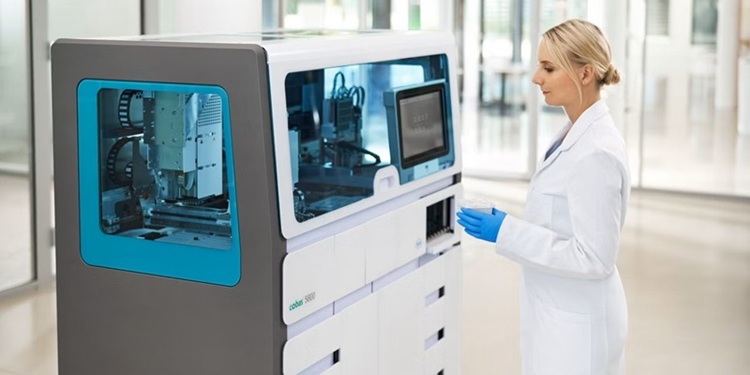Methods Evaluated for HER2 Status in Breast Cancer
By LabMedica International staff writers
Posted on 23 Sep 2013
The human epidermal growth factor receptor 2 gene (HER2) is overexpressed or amplified in approximately 15% to 20% of all breast cancers leading to a poorer prognosis. Posted on 23 Sep 2013
This results in overexpression of the HER2 protein, which is associated with worse clinical outcomes in breast cancer patients, and therefore it is essential to achieve accurate assessment of HER2 status. This can be done at the DNA, messenger ribonucleic acid (mRNA), or protein level by several different methods.

Image: ABI Prism 7700 Sequence Detection System (Photo courtesy of Applied Biosystems).
Scientists at Linköping University (Sweden) analyzed 145 formalin-fixed paraffin-embedded (FFPE) primary breast cancer samples by real-time polymerase chain reaction (PCR) amplification of HER2, using amyloid precursor protein as a reference. The selection of tumor material was based on previous clinical testing of HER2, accomplished either solely by fluorescence in situ hybridization (FISH) for 145 tumors or by both immunohistochemistry (IHC) and FISH for 127 tumors.
The IHC staining for HER2 had been performed on 127 FFPE tumor samples, and this was achieved using the HercepTest (Dako, Glostrup, Denmark). The FISH was performed on 4-μm thick sections of FFPE tissue using the PathVysion HER-2 DNA Probe Kit (Abbott Laboratories; Abbott Park, IL, USA). All reactions for the real time PCR were performed with the ABI Prism 7700 Sequence Detection System (Applied Biosystems AB; Stockholm, Sweden).
The authors found that there was a concordance of 93% between real-time PCR and FISH, and 86% between real-time PCR and IHC. They concluded that real-time PCR is a rapid technique that does not require any sophisticated models to interpret the results. Furthermore, it is cost-effective, and many samples can be analyzed simultaneously. Real-time PCR can therefore be used to detect HER2 amplification in DNA from FFPE breast cancer tissue. The study was published on September 7, 2013, in the journal Pathology and Laboratory Medicine International.
Related Links:
Linköping University
Dako
Abbott Laboratories














